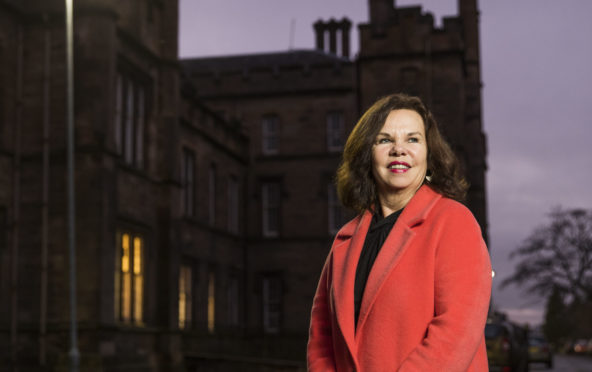
I was a young medical student when I saw the devastating effects of leprosy up close. In 1977, I was studying at the University of Glasgow, and while walking through the city centre a plaque on a doorway caught my eye.
It was for the office of The Leprosy Mission Scotland. Intrigued, I just walked in off the street and asked whether the charity ever needed trainee doctors to volunteer abroad – they did and, after learning more about their work, I was soon packing my bags to travel halfway around the world.
That summer I went off to work (well, there was more learning involved than “work”) in a leprosy hospital in Karigari in the south of India. It was the most wonderful experience, but it was very hard. Not only had I never been to a country like that before, but I was also young and had never before seen such shocking disabilities like those that come from leprosy.
Leprosy is a bacterial infection largely associated with poverty. It causes nerve damage and when left untreated it can lead to a loss of feeling or mobility in the hands, feet and around the eyes, which in turn can cause burns, blisters and other minor injuries to go unnoticed. These injuries often turn into permanent disfigurement and disability, and damage to the eyes can leave sufferers blind.
The service provided by the people working in that hospital was simply fantastic, and the focus wasn’t solely on surgery and medical outreach clinics. The doctors and other medical professionals really thought about the patients’ wellbeing and mental health, and they knew what it is like to live with the stigma that still surrounds the disease.
The fear of leprosy really stems from ancient times when people didn’t understand the condition.
While it is an infectious disease, it is not infectious like coughs or flu, and you need to be with somebody for a prolonged period of time to catch it from them. But seeing people lose their facial features, have their limbs amputated and go blind from the disease really made people scared.
That’s why there were historical instances of people with leprosy having to ring a bell to announce their arrival, and why many people were shut away from the rest of society in so-called leper colonies.
That first visit to India really opened by eyes. When I returned to finish my medical degree, I decided to train in obstetrics but my heart remained in public health and prevention.
I think that’s why, many years later, I took up the role of director of public health for NHS Greater Glasgow and Clyde, which I have had since 2006.
I wanted to continue helping communities. Although I’ve been back to India since that first trip, it’s been with different roles, and most of my work with The Leprosy Mission Scotland is now supporting fundraising and increasing awareness of the disease, which many people still wrongly believe is a thing of the past.
There have been huge changes in the treatment for leprosy since I first saw those sufferers in India.
A multi-drug treatment is very effective and, if the disease is caught early, sufferers can be cured without experiencing any lasting disability.
And the treatment is cheap, too – it costs just £24 to give a course of medicine to somebody in need, so even small amounts donated by the public can help to change somebody’s life.
Over decades there has been a reduction in the disease, but now that it is no longer seen as a priority or a public health emergency, there is a risk the skills required to care for patients and identify the disease will be lost.
What’s more, if we are complacent, who is to say there won’t be a resurgence?
The World Health Organisation estimates that more than 200,000 people were diagnosed with leprosy in 2018, with more than half of cases originating in India.
In other countries, such as Bangladesh, surveys also suggest there are more undiagnosed cases than are reported, so it is still very much an on-going battle.
Leprosy effects the poorest communities in our world, and visiting these places really puts into perspective the stark reality of living in a low-resource country.
When you see how men, women and children are suffering because of a lack of access to such an affordable treatment, you really can’t help but feel lucky for everything we have.
As told to Alice Hinds
Battling this terrible disease
Campaigners and charities are coming together to mark World Leprosy Day and increase awareness of the disease.
The leprosy infection starts by damaging small nerves in the skin’s surface, usually resulting in discoloured patches with no feeling.
If left untreated, damage then spreads to large nerves, leading to loss of sensation and feeling in the hands and feet, and muscle paralysis. Without noticing, sufferers often experience burns, cuts and wounds that become difficult to heal or become infected, often leading to deformities, shortening of fingers and toes or, ultimately, amputation of limbs.
Since 1982, a combination of three drugs, taken for six or twelve months, has been used to treat leprosy.
The World Health Organisation reported that 208,619 people were diagnosed with leprosy in 2018, with around 16,000 children diagnosed every year.
Fewer than 20 countries around the world report more than 1,000 new leprosy cases each year, but the disease still exists at some level in most countries in South and Central America, Africa and Asia.

Enjoy the convenience of having The Sunday Post delivered as a digital ePaper straight to your smartphone, tablet or computer.
Subscribe for only £5.49 a month and enjoy all the benefits of the printed paper as a digital replica.
Subscribe